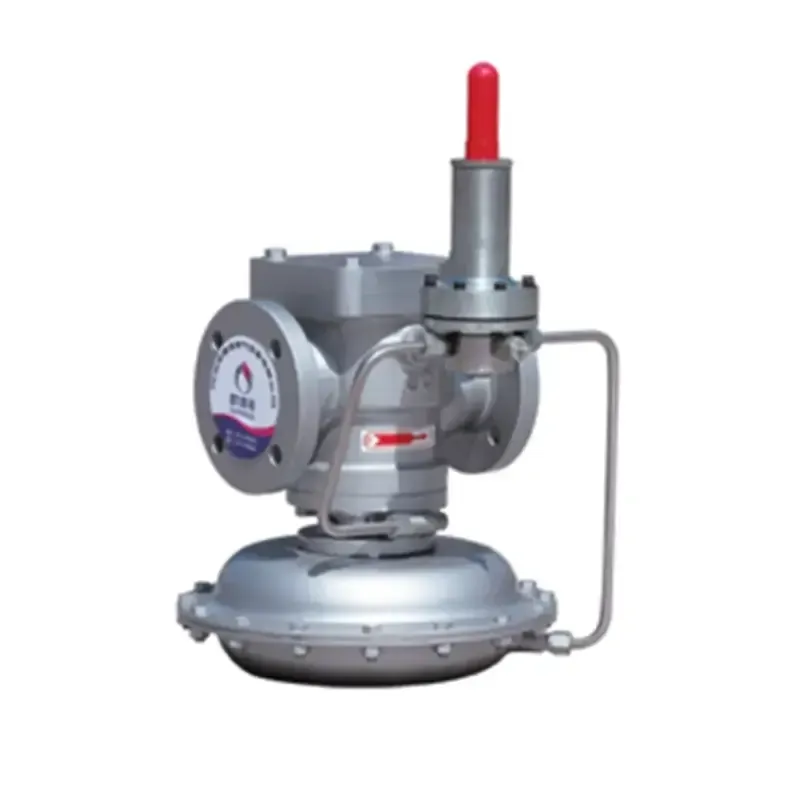
Nov . 11, 2024 11:10
Back to list
صمام تنفيس أمان الغاز
Safety Relief Valves for Gas Systems A Critical Component for Protection
In the realm of industrial safety, especially in processes involving gases, the importance of safety relief valves cannot be overstated. These devices, often referred to as pressure relief valves or safety valves, are designed to protect equipment and personnel by preventing excessive pressure buildup in gas systems. Understanding their function, operation, and maintenance is crucial for ensuring the safety and efficiency of gas-related operations.
The Function of Safety Relief Valves
Safety relief valves serve a fundamental role in any gas system by automatically releasing pressure. When the pressure within a gas vessel or pipeline exceeds a predetermined level, the valve opens and allows gas to escape, effectively reducing pressure to a safe level. This could occur during various operational scenarios, such as overheating, equipment failure, or blockages. The primary objective of these valves is to prevent catastrophic failures, which could lead to explosions or significant leaks, posing risks to both lives and the environment.
Types of Safety Relief Valves
There are several types of safety relief valves, each serving different applications and systems. Among the most common are
1. Spring-Loaded Relief Valves These are the most prevalent type, where a spring mechanism holds the valve closed until the pressure exceeds the set point. Once activated, they provide quick pressure relief.
2. Pilot-Operated Relief Valves These work in conjunction with a pilot valve that controls the main valve mechanism. They can provide more precise control and are commonly used in high-pressure applications.
.
Each type of valve has specific advantages and is chosen based on the requirements of the gas system it protects.
صمام تنفيس أمان الغاز

Operational Considerations
The proper selection and installation of safety relief valves are vital to their effectiveness. Factors such as the type of gas, operating pressure, temperature, and system design must all be taken into account. It is also crucial to ensure that the relieving capacity of the valve is adequate for potential overpressure scenarios.
Once installed, regular maintenance and testing of safety relief valves are essential. This includes routine inspections for signs of wear and corrosion, as well as performance testing to verify that the valve opens at the correct pressure. Neglecting these tasks can lead to valve failure, rendering them ineffective during an emergency.
Regulatory Compliance
In many regions, the use of safety relief valves in gas systems is governed by strict regulations and standards. These regulations aim to ensure that all safety measures are in place to protect workers, the public, and the environment. Operators must be well-versed in these regulations and ensure that their systems are compliant, which can involve regular audits and documentation of procedures and maintenance records.
The Role of Technology
Advancements in technology are transforming the landscape of safety relief valves. Modern valves now often incorporate smart technology, allowing for remote monitoring and automated testing. Such innovations enhance the reliability and efficiency of gas systems, enabling operators to respond swiftly to any abnormalities.
Conclusion
Safety relief valves are a critical component in the management of gas systems, providing essential protection against overpressure situations. Understanding their functionality, types, operational needs, and compliance requirements is fundamental for ensuring safety in industrial settings. As technology continues to evolve, the integration of smart solutions into safety relief valves will further enhance their effectiveness, ultimately leading to safer gas operations. Investing in these safety devices not only protects personnel and equipment but also contributes to a sustainable industrial future.
Next:
Latest news
-
Safety Valve Spring-Loaded Design Overpressure ProtectionNewsJul.25,2025
-
Precision Voltage Regulator AC5 Accuracy Grade PerformanceNewsJul.25,2025
-
Natural Gas Pressure Regulating Skid Industrial Pipeline ApplicationsNewsJul.25,2025
-
Natural Gas Filter Stainless Steel Mesh Element DesignNewsJul.25,2025
-
Gas Pressure Regulator Valve Direct-Acting Spring-Loaded DesignNewsJul.25,2025
-
Decompression Equipment Multi-Stage Heat Exchange System DesignNewsJul.25,2025

